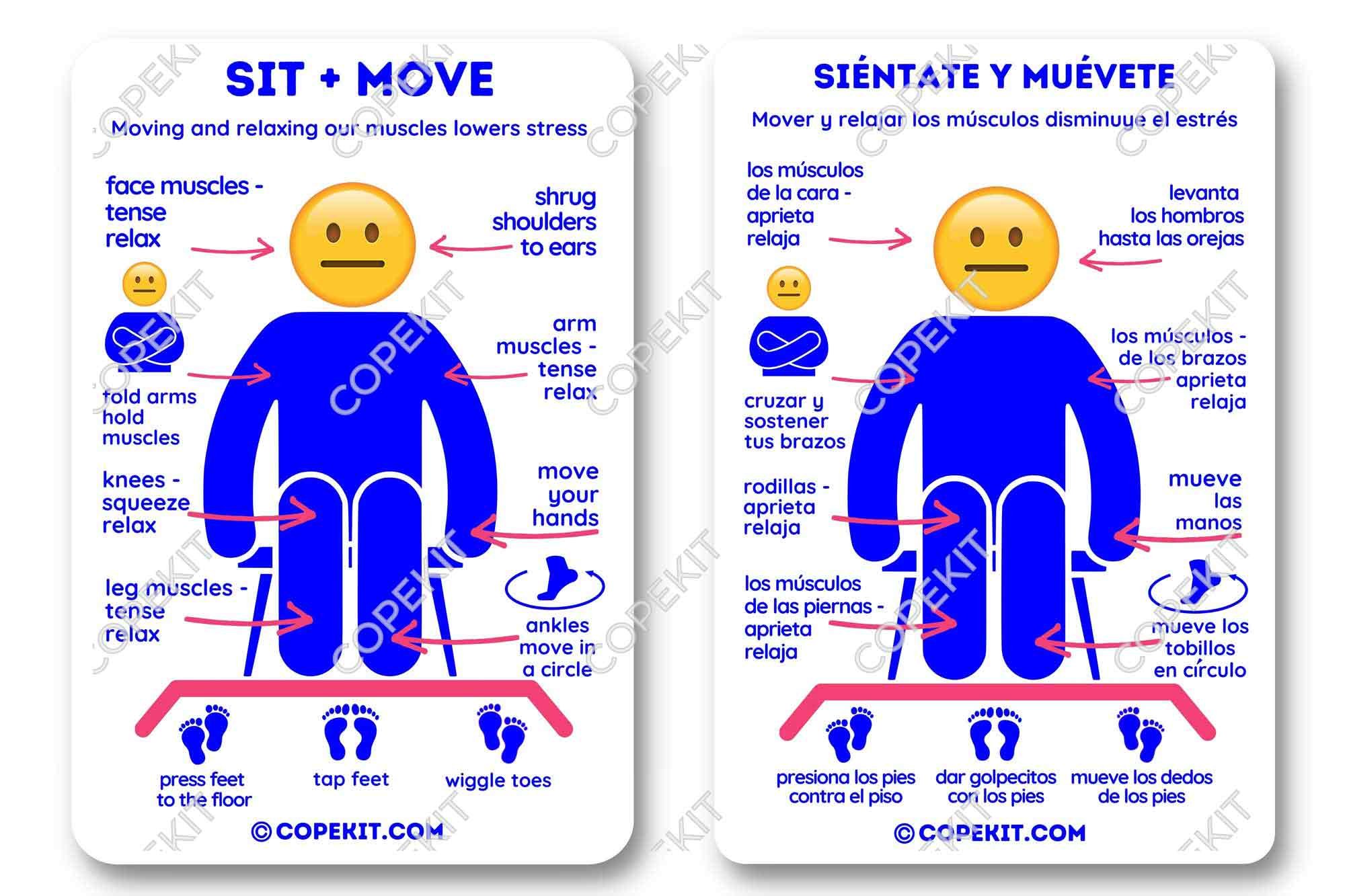How It Works
Stress makes our muscles tight and tense, bringing physical pain and holding in anxiety. By relaxing our muscles, we can use the body to dissipate stress, calm our mind, and improve physical well-being. This sequence of “tense and relax” , also known as “progressive muscle relaxation”, is where we intentionally “tense” our muscles, then “relax” them. This helps our body get rid of “stored up” stress, enabling our body, mind and feelings to calm down.
Sit + Move also incorporates additional somatosensory techniques, such as toe-wiggling and touching a chair, to connect us to present reality. Especially useful in settings with space restrictions or large movement restrictions, where walking/running is not possible.
How to Use
choose a sequence : downwards (head to toe), upwards (toe to head) or by muscle groups (hand/forearm, chest/shoulders/upper back)
focus attention on each muscle/ muscle group in turn
tense the muscle/ muscle group
maintain the tension for 5-7 seconds
slowly release the tension, then relax for 10 - 20 seconds
notice feelings of relaxation before moving on to the next muscle/muscle group
try adding breathing : breathe in when tense muscles, breathe out when you relax
Learning tip: as stress and trauma disrupt the mind, feeling and body connection, we may not recognize our muscles as being tense. Practicing “tense and relax” helps us better identify “body signs of stress”. This increased body awareness enables us to more easily and quickly activate healthy coping.
When to Use - Signs of Stress/Trauma
preoccupied, worried, overwhelmed
anxious, panicked, agitated
immobilized, freezing, not moving
experiencing tight, tense muscles
experiencing jaw, neck, and/or back pain; headaches
What It Can Do
relieve stress, muscle tension
decrease anxiety
occupy your mind, distract you from distressed feelings
reduce physical pain in the jaw, neck, back; decrease headaches
improve sleep
lower blood pressure
improve body awareness
promote integration of mind and body, improving self-control and self-efficacy
“Can I do everything at the same time?” Liam, age 10

